Transmission, distribution and group networks in power supply — what's the difference
According to the seventh edition of the rules for the installation of electrical installations, networks for providing power supply to administrative, residential, public and household buildings are divided into: supply, distribution and group. With each subsequent release, these network definitions undergo some changes and in the seventh edition of PUE these definitions are given as follows:
-
7.1.10. Power network - a network from the switchgear of a substation or a branch of overhead power lines to the VU, VRU, main switchboard.
-
7.1.11. Distribution network — network from VU, VRU, main switchboard to distribution points and panels.
-
7.1.12. Group network - a network of panels and distribution points to lamps, sockets and other electrical receivers.
VU — input device; VRU — Input Distribution Unit; Main switchboard — main switchboard.
A distribution point is an electrical installation designed to receive and distribute electricity at one voltage without conversion and transformation (more often this term refers to installations up to 1 kV, also calling them a power supply or installation point).
For a voltage of 10 (6) kV in power supply practice, the equivalent concept of a distribution substation (RP) is widely used. The switchboard is called a switchgear up to 1 kV, designed for the control and protection of network lines.
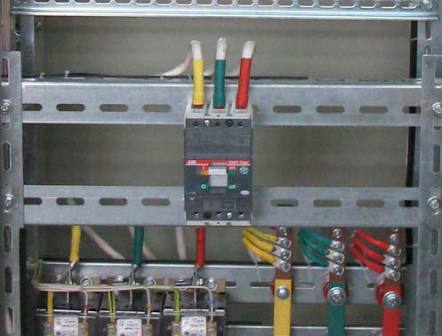
So power networks are used for power supply in cities, and systems with distribution points are widespread, which are connected to energy centers by a number of lines with a significant load capacity. The lines of the distribution network are connected to the busbars of the distribution points. That is, the distribution point serves as a repeated source of energy.
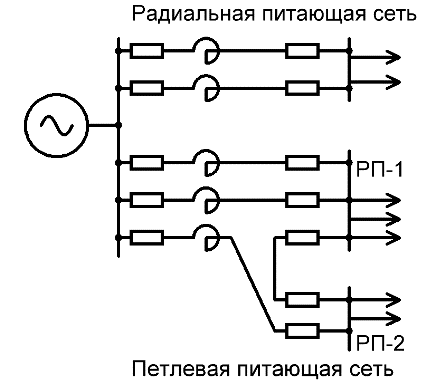
Such two-level networks are, for example, typical of power centers that have separate feedback loops on bypass lines that are necessary to limit short-circuit currents.
The task of the supply network with loads with a total power of 3 MVA or more is to provide power to consumers through backup lines or to ensure automatic introduction of backup even in case of a damaged network.
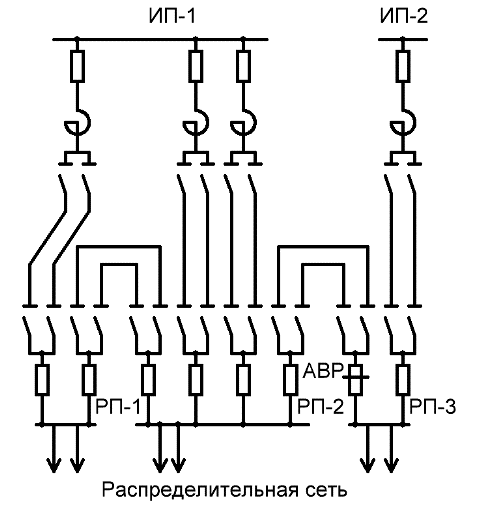
The separate operation of the distribution points allows the network to operate normally at an unacceptably high value of short-circuit power on the distribution point's busbars compared to their parallel operation. If one of the power lines is damaged, the jumper switch between the points is automatically turned on, which is normally off.
The number of distribution points connected to the power network is usually two or more, while they can also be powered by different sources. Today, group reaction schemes are widely used for regional substations, by installing split reactors or using split-winding transformers, which makes it possible to significantly simplify the equipment of switchgears from 6 to 10 kV and apply simplified split schemes to them. Networks with deep sections, with section switches are built both in the regional substation and in the distribution points with automatic introduction of reserve.
Two-stage power supply circuits for electrical loads, despite the reduction in the length of the network from 6 to 10 kV, but due to the expansion of power cables compared to single-stage, are more expensive, since the distribution points are used (transformer "boxes" - complete transformer substations — combine a transformer substation and a distribution point), and in the case of individual response of outgoing lines — also due to the presence of expensive line cells with reactors.
Depending on the proximity of the power source to the center of the loads, the density of the loads, their distribution over the area, one or another network construction scheme is selected and the possible options are compared in advance.
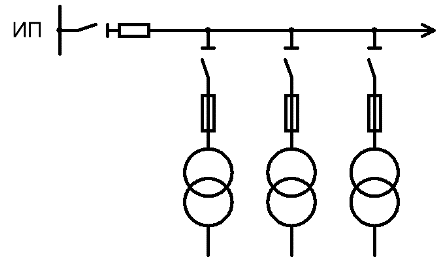
The simplest and cheapest is the urban distribution network with high voltage, but its disadvantage is that in the event of an emergency anywhere in the network, all users are disconnected at once.
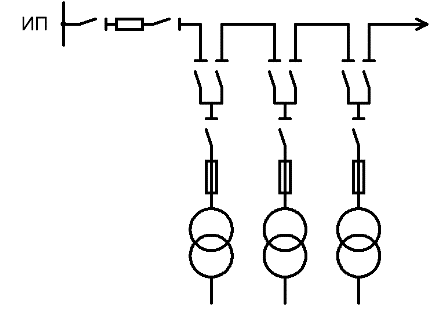
When the line is connected to the busbars of individual substations, there are disconnectors at the entrances of each of the sections and each section can be disconnected separately for maintenance work. This scheme is more expensive, but the service is more convenient. In the event of an incident, only those users connected to the damaged zone are without power.
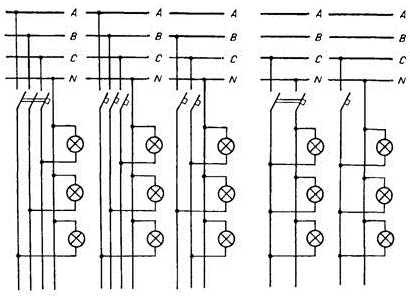
The purpose of the group network is to directly connect indoor lighting fixtures and plugs. These can be group line schemes for a three-phase system with a neutral wire or options for distributing consumers between phases in a three-phase group.
The first option is optimal from the point of view of voltage losses in the line, since the "centers of gravity" of the loads of all phases in this case coincide, but this option is not the best, in particular - in terms of the attenuation of light waves and , in addition, in the case of one or two phases of shutdown, a random distribution of lighting is created along the lines.
